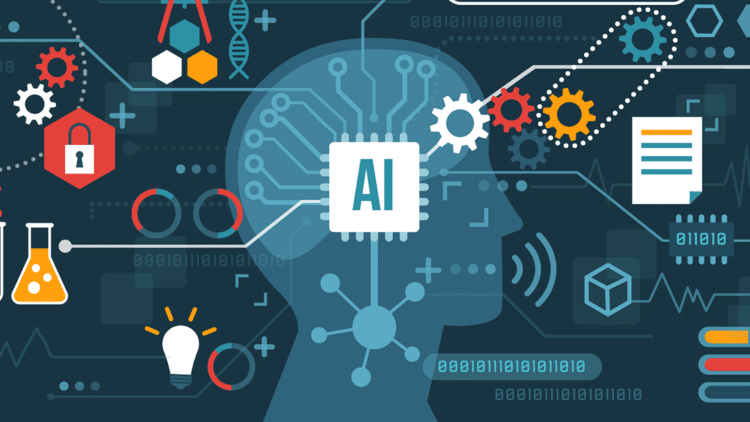In the era of digital transformation, businesses are continually seeking innovative ways to leverage data to gain a competitive edge. One such approach is through Machine Learning Operations (MLOps), a multidisciplinary field that combines Machine Learning (ML), Data Engineering, and DevOps. MLOps aims to standardize and streamline the lifecycle of ML models, from development to deployment and monitoring. This article will delve into the role of MLOps in modern business, providing a comprehensive understanding of its importance and practical applications.
Understanding MLOps
Before we delve into the specifics, let’s first understand what MLOps is. MLOps, a compound of “Machine Learning” and “Operations,” is a practice for collaboration and communication between data scientists and operations professionals to help manage production ML lifecycle. MLOps looks to increase automation and improve the quality of production ML while also focusing on business and regulatory requirements.
The Importance of MLOps in Business
Accelerating Time-to-Value
MLOps accelerates the time-to-value of ML models by streamlining the process from development to deployment. It enables rapid experimentation and iteration on models, reducing the time it takes to go from a business problem to a deployed solution. This speed is crucial in today’s fast-paced business environment, where being first to market can often mean the difference between success and failure.
Ensuring Model Quality and Reliability
MLOps also plays a critical role in ensuring the quality and reliability of ML models. It does this by providing a framework for testing, validation, and monitoring of models. This framework helps to catch issues early in the development process, reducing the risk of deploying faulty models that could lead to poor business decisions or customer experiences.
Facilitating Collaboration
MLOps facilitates collaboration between data scientists, ML engineers, and operations professionals. This collaboration is essential for creating ML models that not only perform well but also meet business and regulatory requirements. By breaking down silos and fostering a culture of shared responsibility, MLOps can help businesses get the most out of their ML initiatives.
MLOps in Practice: Technical Examples
Let’s now look at some technical examples of how MLOps can be implemented in a business setting.
Continuous Integration and Continuous Deployment (CI/CD) for ML
One of the key practices in MLOps is the use of Continuous Integration and Continuous Deployment (CI/CD) for ML. This involves automatically building, testing, and deploying ML models whenever changes are made. This practice helps to ensure that models are always up-to-date and performing optimally.
For instance, consider a recommendation system for an e-commerce platform. The system uses an ML model to predict what products a customer might be interested in based on their browsing history. With CI/CD, whenever new data is collected, the model can be automatically retrained and deployed, ensuring that the recommendations are always relevant and up-to-date.
Model Monitoring and Management
Another important aspect of MLOps is model monitoring and management. This involves tracking the performance of models over time and managing their lifecycle.
For example, consider a credit scoring model used by a bank. The model’s performance could degrade over time due to changes in the economy or customer behavior. With MLOps, the bank can monitor the model’s performance and retrain or replace it as needed, ensuring that it continues to make accurate predictions.
Automated Machine Learning (AutoML)
Automated Machine Learning, or AutoML, is an essential component of MLOps. AutoML automates the process of applying machine learning, including preprocessing data, selecting appropriate models, tuning parameters, and even interpreting results. This automation reduces the time and expertise required to develop and deploy effective machine learning models.
Consider a healthcare organization that wants to predict patient readmissions. Traditionally, developing a predictive model would require a team of data scientists to manually preprocess data, select a model, tune parameters, and validate the model. With AutoML, much of this process can be automated, allowing the organization to quickly develop and deploy a predictive model with less effort and expertise.
Feature Stores
A feature store is a centralized repository for storing and managing features, which are individual measurable properties or characteristics of a phenomenon being observed. Feature stores enable consistent and reliable access to features for training and serving machine learning models.
Consider a ride-sharing company that uses machine learning to predict demand. The company might use features such as the time of day, day of the week, weather conditions, and local events to make its predictions. By storing these features in a feature store, the company can ensure that the same features are used consistently across different models and that the most up-to-date features are always used for predictions. This consistency and reliability can improve the accuracy of the company’s predictions and ultimately lead to better business decisions.
Final thoughts
MLOps plays a pivotal role in modern business. It accelerates the time-to-value of ML models, ensures their quality and reliability, and facilitates collaboration between different roles. By implementing MLOps practices such as CI/CD and model monitoring, businesses can maximize the value of their ML initiatives and stay ahead in the competitive landscape.
As we move forward, the importance of MLOps will only continue to grow. Businesses that fail to adopt these practices risk falling behind, while those that embrace them will be better positioned to leverage the power of ML to drive innovation and growth.






